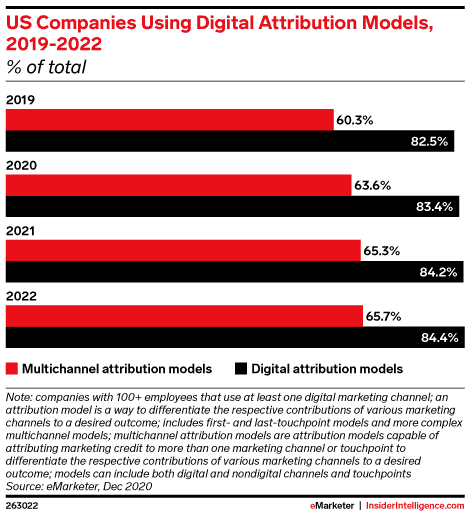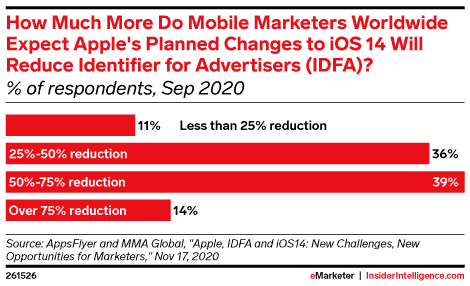
Moti Radomski
VP, Product @ Skai

Moti Radomski
VP, Product @ Skai
A little over a decade ago, digital marketers made an alarming realization that the way they had been measuring their advertising investments was simply wrong. Regardless of how many ad exposures reached a user, resulting conversions (sales, leads, etc.) were wholly attributed to the last ad to be clicked.
Once marketers were shown a new way—multi-touch attribution (MTA)—where each of the ad interactions in a user’s path to conversion receive some credit for the conversion, it was like a light switch had been turned on in the industry. It just made so much sense! Of course we should be crediting every marketing touchpoint with some of the value of each conversion, duh!. So within a few short years, MTA replaced Last Click as the gold standard for digital marketing measurement.
The change wasn’t that easy though. First, marketers had to be convinced MTA was a viable solution that was more than just a good concept. Then, new technologies and processes had to be put in place in order to capture these individual customer journeys. And marketers themselves had to be retrained both in practice and philosophically in order to get comfortable with the new way of doing things.
And that’s where we’ve been for the last ten years.
As we enter into the next era of digital advertising, new data privacy limitations for how marketers can track users across the web are changing everything. The way marketers have targeted, personalized, and optimized advertising are just a few areas that are being rethought right now to fit into what is becoming a “cookieless” environment.
With the proliferation of devices and channels, consumer journey tracking has become increasingly difficult over the last ten years. The new limitations on data tracking is going to render it virtually impossible to keep MTA as the primary measurement methodology.
What’s replacing MTA? Incrementality. It’s cookieless, can answer questions marketers have never been able to answer, and is going to replace MTA over the next few years in the same way that MTA replaced Last Click a decade ago.
At that time, while many marketers were celebrating the evolution that MTA represented, some in the industry questioned why we ever embraced Last Click in the first place. After all, at that point, literally billions of dollars had been spent on digital media using data-driven decision making based on Last Click’s flawed data. There were probably some tough conversations in boardrooms around the world about who was to blame. Many marketing organizations were late adopters of MTA simply because the changeover dramatically underscored just how wrong the previous decade of digital ad buying had been.
Imagine if you were a CMO at the time and had championed hard for more allocation to digital channels, only to find out that the measurement you had relied on for years to help you make those choices had been flawed from the beginning.
While there are many parallels between the industry’s move from Last Click to MTA and what’s going on today, one would imagine replacing MTA to incrementality is going to be even tougher than the change that took place a decade ago.
Even though any objective analysis of the current situation makes it incredibly clear that incrementality is the new, best option for marketing measurement, it’s worth taking a look at five reasons why it will still be hard to get the industry to leave MTA:
Faith is a hard thing to shake. Over the last ten years, marketers have put all of their faith into MTA. They’ve allocated budgets, hired and fired partners and agencies, and have optimized their programs based completely on how their MTA systems have presented reality. To now declare that MTA is inherently flawed somewhat means that the last ten years have been inherently flawed.
Marketers have been trained to believe that the only proper way to measure ad effectiveness is to measure individual consumer journeys and anything less is simply wrong. While incrementality has incredible benefits and is certainly a more sophisticated and accurate marketing measurement approach, it doesn’t offer the same granularity of MTA.
Of course, MTA doesn’t truly offer the granularity that it was designed to provide either. But, faith in the approach is so powerful, that marketers simply look beyond the flaws the same way they look beyond the flaws of their children. They only see the good, and the bad is simply “the cost of doing business.” Some may even quote Voltaire’s “Don’t let perfect be the enemy of good” as a way to look past the obvious flaws of MTA.
There will certainly be MTA champions around the industry looking to hold on to that approach simply because they have so much faith in it as the right solution.
Most marketing organizations either use MTA or other attribution models. These
On top of the expense for the MTA systems themselves, there have been other investments in MTA. Training, for example, is not cheap. But also the integrations needed to port the data from their media buying tools and campaign management platforms into MTA tech can mount up. These expenses have been signed off by senior marketing executives who believed they were doing the right thing at the time.
There are probably marketers reading this post right now who have spent over a million dollars in the last decade on these systems and cascading integration requirements. To hear now that these systems are flawed and they’ve probably been somewhat wasting those investments might be worrisome in the least.
The average CMO tenure has now dropped to 41 months. Already under pressure to perform in an increasingly competitive market, the last thing these execs need to hear is that they’ve spent a lot of their company’s money wrong by investing in MTA.
Another factor that might keep marketers up at night is that digital marketing has absolutely exploded over the last ten years. As of 2018, online marketing budgets (in aggregate dollars) have eclipsed offline marketing budgets.
The main reason for that is the migration of consumer eyeballs and attention to the digital realm. But, a close second is that digital marketing was touted as being the most measurable form of advertising. With highly accurate reporting and measurement, brands felt more comfortable investing in digital marketing because of the promise of being able to optimize their effectiveness over time. That comfortability and belief that it can better move the needle with customers cannot be understated as a major driver of growth in this industry.
With more investments into digital marketing, there’s just more at stake. There’s more scrutiny into how those dollars are invested. When “interactive” marketing was just 3% of spend at the turn of the century, the stakes were lower and mistakes weren’t as impactful. Now that it’s over 50% of all spending, it’s safe to assume that many brands will either succeed or fail based on how well they can market themselves online.
While the critical importance of getting it right might seem like it would open doors to better systems like incrementality, it’s also going to open up a lot of questions about how budgets over the last ten years have been spent. Because of this, some marketers will try to avoid replacing MTA with all of their might.
Although you can’t navigate to an advertising trade publication these days without seeing headlines about the end of cookies and mobile tracking identifiers, the reality is that, as marketers, many of us simply don’t understand the ins and outs of data tracking to truly comprehend just how it will negatively impact multi-touch attribution.
Studies have shown that most marketers are in fact very confused about the impending changes. They know they are going to happen, but they’re not sure when and to what extent they will affect their programs.
Take for example a recent AppsFlyer study of mobile marketer expectations for how Apple’s IOS14 tracking changes will impact mobile tracking. It’s all over the board. 11% think it won’t be very severe, 36% expect it will be impactful, 39%
This isn’t a knock on marketers. Frankly, the deep ins and outs of consumer data tracking aren’t talked about enough. It’s no surprise that many of us aren’t yet convinced of the true flaws of MTA and why the impending data limitations will render it useless—except in certain situations (read my post What’s Going to Happen with Multi-Touch Attribution in a Cookieless World? to learn more about that.)
Finally, the last reason why it will be hard for the industry to move away from MTA is simply that change is hard. We’ve been doing it the same way for so many years that moving to any other method will, of course, receive some hesitation.
As it should. Institutions like marketing measurement are core and fundamental to what we do. It’s wise not to keep changing things up very often as it provides a foundation for the rest of the operations to sit upon. Only in circumstances where a process is outdated or not useful anymore needs to be replaced. Of course, in this case, MTA must go after the final Google Chrome change begins.
If you truly believe that moving from MTA to incrementality is the best approach for your marketing organization, check out my previous article, The Post-Attribution Era Has Begun: How to Transition Your Org to Cookieless Marketing Measurement. In that blog post, I offer a change management process that can help you plan your migration and execute it successfully.
Years ago my wife bought all of the seasons of Friends on DVD. Now that they are all streaming, it doesn’t mean she did something wrong twenty years ago. At the time, it was the best way to have all of the episodes.
The adoption of multi-touch attribution over a decade ago was an evolution of a very young digital marketing industry. Regardless of the issues I’ve raised with it in my recent posts—like with my wife’s Friends’ DVDs—simply put, it was the best option at the time.
As flawed as MTA has been, it was head and shoulders above Last Click. Attributing the full value of a conversion to just the last ad a consumer touched is just ludicrous. It doesn’t help marketers value upper- and mid-funnel programs which absolutely are a key ingredient in getting those downstream conversions. Under Last Click, paid search was over credited as a channel and other, highly influential channels such as online video were vastly under-credited.
So, even though the industry is now replacing MTA, moving to it ten years ago was the best idea. No one should feel they were duped or did anything wrong. Although it might not have been completely accurate, it was a much better way to measure marketing effectiveness than the previous method. Sure, maybe your YouTube campaigns should receive more credit than they do now, but under Last Click, they hardly show up as an important component.
MTA showed us that the customer journey is complex and driving consumers to action requires a multi-channel approach—and using those channels in the right way to drive the most influence is critical. Just as we learned a decade ago, there’s a new way to look at the world. Incrementality measurement is the right approach for the next era of digital marketing the same way MTA was the right approach over Last Click.
We don’t know what the future holds. Maybe in ten years, we’ll have a better measurement approach that will replace incrementality? But, for now, let’s not look backward with regrets, and instead focus on moving forward toward what’s right.
Impact Navigator measures the real-world effectiveness, or incrementality, of a marketing tactic in the only place that matters: the real world, with real people, as part of a real marketing test measuring business responses that matter like revenue impact, client acquisition, and brand engagement. Leave the guesses and hunches to your competition, and speed ahead with your own growth strategy powered by real consumer insights.
Schedule a quick demo today to see Impact Navigator firsthand.
You are currently viewing a placeholder content from Instagram. To access the actual content, click the button below. Please note that doing so will share data with third-party providers.
More InformationYou are currently viewing a placeholder content from Wistia. To access the actual content, click the button below. Please note that doing so will share data with third-party providers.
More InformationYou are currently viewing a placeholder content from X. To access the actual content, click the button below. Please note that doing so will share data with third-party providers.
More Information